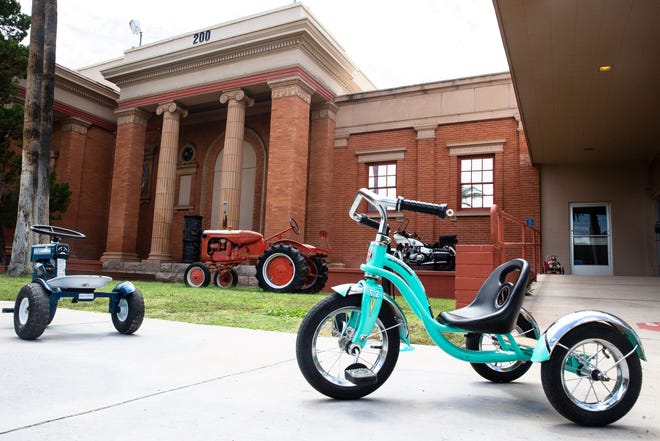The reputation of Armory Park as a historic gem even extends to Phoenix. This article appeared on the azcentral.com website on 10/15/21.
Armory Park
Armory Park, just south of the city center, is the first residential district in Tucson to be listed on the National Register of Historic Places, according to the Blenman-Elm Neighborhood Association.

The community has had several names over the years. Its centerpiece park originally was called Camp Lowell and is where the military members who guarded the Tucson Presidio were stationed. Camp Lowell was established in 1866. The soldiers were moved to Fort Lowell, about 8 miles away, in 1873.
In 1913, construction began on the first armory in Arizona and the site became known as Military Plaza in 1914.
Now, the space is called Armory Park and its features include several memorials, including the Tucson Arizona World War II Memorial and a memorial commemorating those who served in the Spanish-American War.
Before the park was officially established, the area rapidly grew as the Southern Pacific Railroad began construction in the late 1800s. As railroad workers and their families moved to the area, more homes were developed, said Martha McClements, chair of the Armory Park Historic Zone & Advisory Board.
Some homes — there are 800 structures in the neighborhood — have two front doors because they were shared by homeowners and railroad workers renting part of the home. Architectural styles include Queen Anne, Greek Revival and Territorial. Walk down the wide streets of this neighborhood starting at Fourth Avenue and 12th Street to see an array of Victorian-style homes.

Armory Park also is home to the Children’s Museum Tucson, which occupies the former Carnegie Free Library, dating to 1901. And take a look at the Safford K-8 School, which was built in 1888. Originally called the Plaza School, the Spanish Colonial Revival structure was designed by Tucson architect Annie Rockfellow.
The article was excerpted from: Tucson historic neighborhoods: How to explore 3 of the city's most interesting districts, Sofia Krusmark, Arizona Republic.
No comments:
Post a Comment